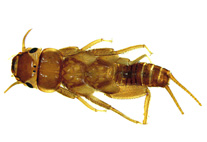Abstract
Three species of the genus Sectonema, namely S. demani, S. heynsi and S. macrospiculum, originally described by E. Altherr, are re-described on the basis of type material. Detailed descriptions, morphometrics and illustrations, including line drawings and/or LM pictures, diagnoses and remarks about their identity and later reports are provided for each species. Sectonema demani is characterized by its 6.78–7.24 mm long body, lip region 27–28 µm broad, mural tooth 19–20 µm long at its ventral side, pharyngeal expansion 834–875 µm long or 68–69% of total neck length, uterus a simple tube-like structure 2.1–2.2 times the corresponding body diameter, V = 49–52, tail short and rounded conoid (51–55 µm, c = 123–143, c’ = 0.7–0.8), and male unknown. Sectonema heynsi is distinguished by its body 6.45 mm long, lip region 28 μm broad, circumoral area bearing cilia- or seta-like structures, mural tooth-like structure 20 μm long, pharyngeal expansion 856 μm long or 68% of total neck length, uterus a tube-like structure ?1.7 times the corresponding body diameter, V = 50, tail short and rounded to conoid (54 μm, c = 120, c’ = 0.7), and male unknown. And S. macrospiculum is characterized by its 4.07–5.06 mm long body, lip region 27–28 μm broad, ventral side of the odontostyle 15 μm long, pharyngeal expansion 555–640 μm long or 67–68% of total neck length, uterus a simple tube-like structure 1.9–2.1 times the corresponding body diameter, V = 53, female tail short and convex conoid with rounded terminus (62 μm, c = 82, c’ = 0.7), male tail more conoid than that of female and with the ventral side visibly more straight (58 μm, c = 71, c’ = 0.8), spicules 107 μm long, and eight irregularly spaced ventromedian supplements bearing hiatus.

